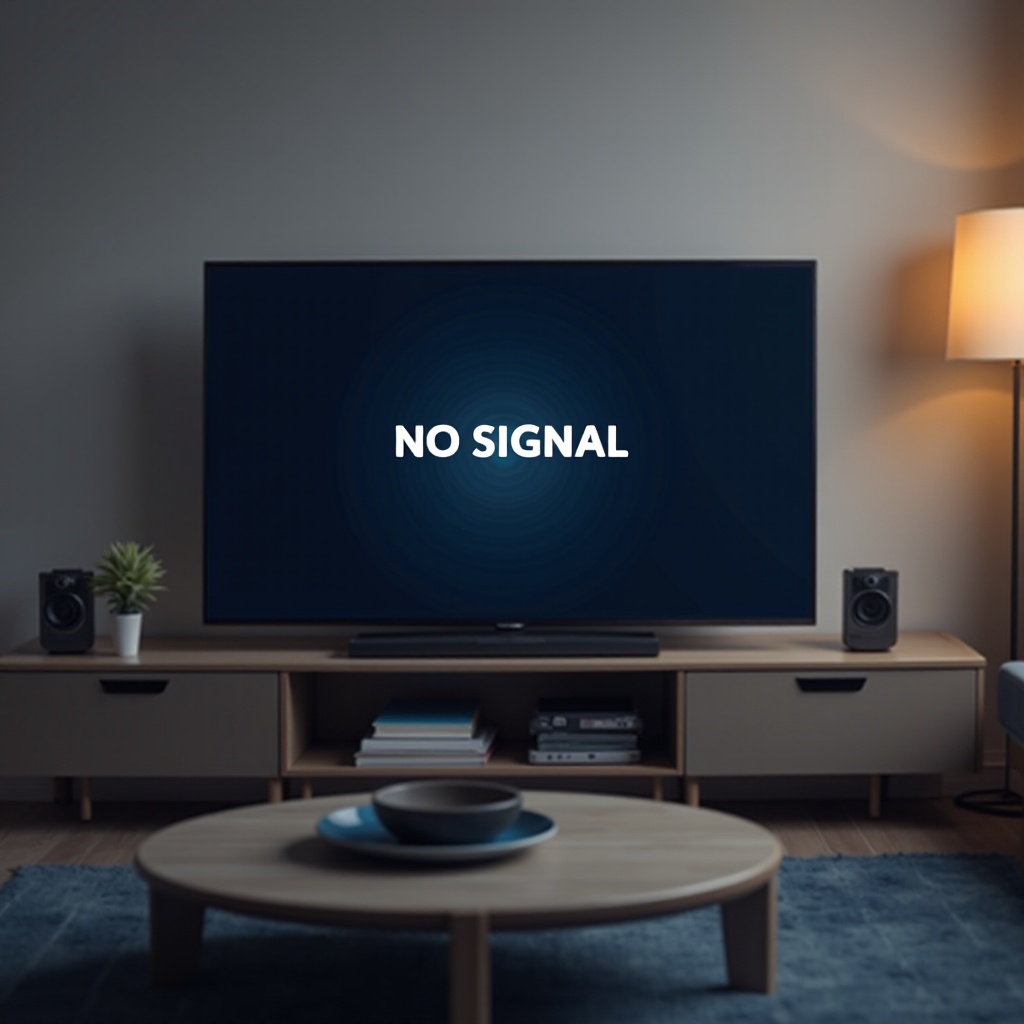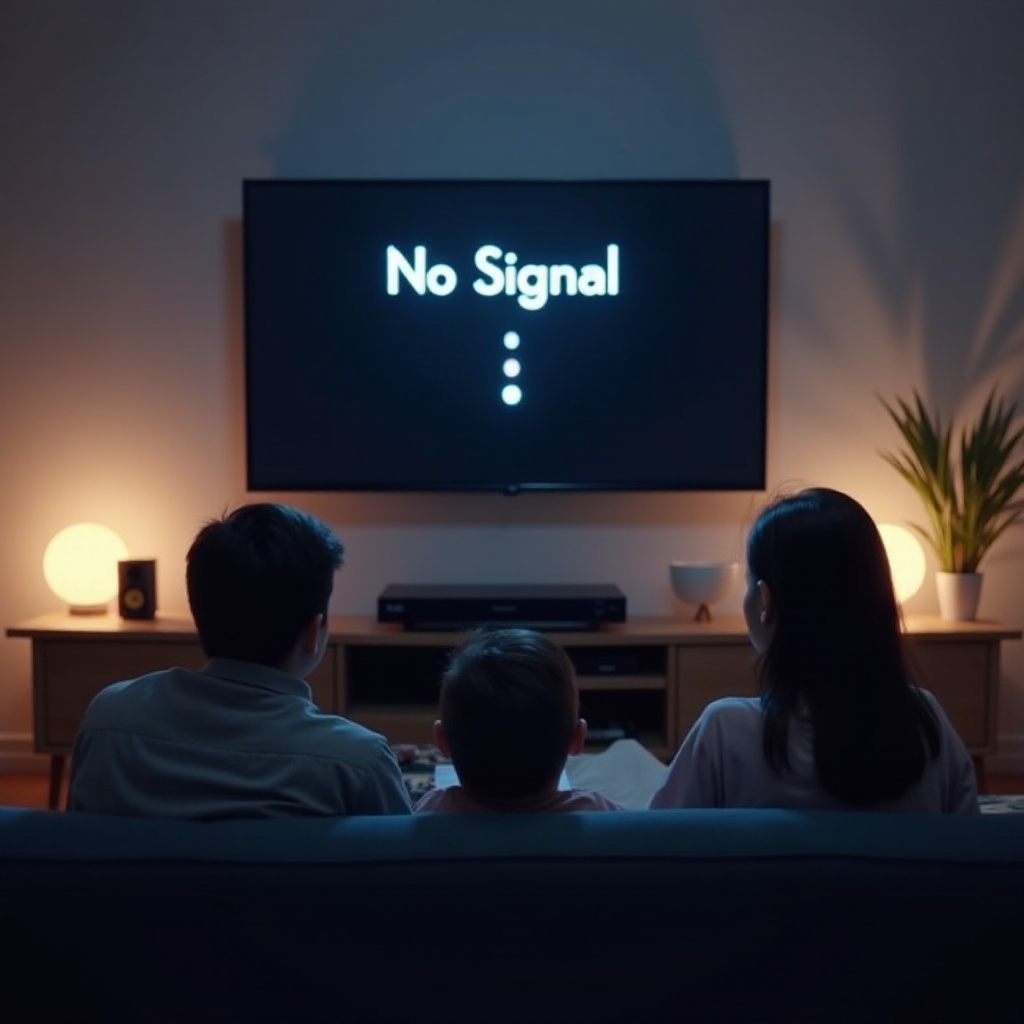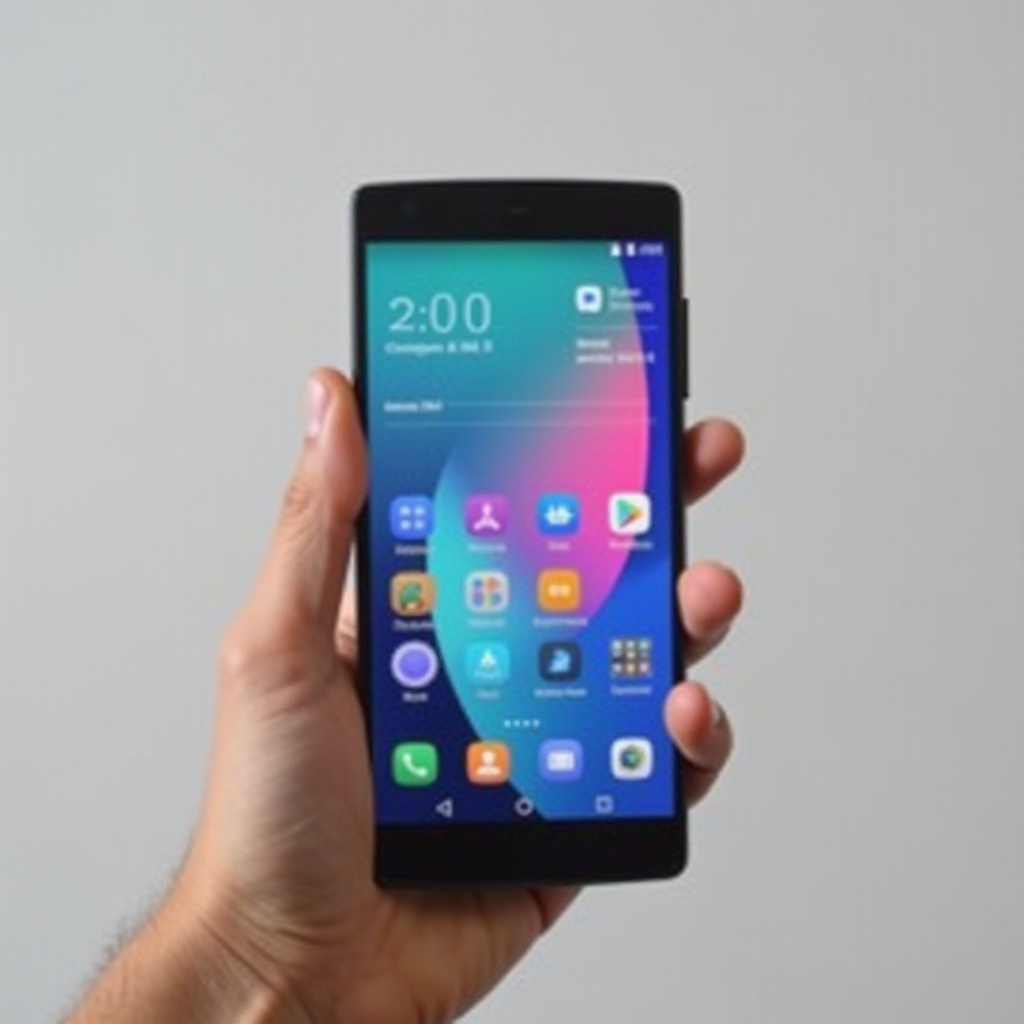Introduction
Encountering a ‘No Signal’ message on your Panasonic TV is undeniably vexing, particularly when all you wish to do is relax with a movie or your favorite show. This common error can occur due to various reasons ranging from notable cable misconnections to more intricate technical challenges. The aim of this guide is to equip you with the necessary insights and steps to troubleshoot and correct the ‘No Signal’ issue, ensuring that your viewing experiences are uninterrupted.

Understanding the ‘No Signal’ Error on Panasonic TV
The ‘No Signal’ prompt on a Panasonic TV signifies a breakdown in communication between your TV and the connected external device, such as a cable box, gaming console, or DVD player. This disruption could be due to faulty cable connections, incompatible devices, or incorrect input settings on your television. Fully grasping these potential causes is the crucial first step towards resolving the issue and reclaiming your entertainment hassle-free.
To ease you into troubleshooting, let’s begin with the primary steps. Although these solutions might appear trivial, they can rectify the majority of ‘No Signal’ problems that users typically experience.

Initial Troubleshooting Steps
Checking Cable and Port Connections
- Examine the cables: Begin by ensuring that all cables—especially HDMI ones—are securely attached to the corresponding ports on both your Panasonic TV and external device. Loose connections are often the main offender in signal loss.
- Test different HDMI ports: If necessary, try plugging the cable into alternate HDMI ports available on your TV, as a port fault might be the underlying issue.
- Inspect the cables for damage: Look for any signs of damage, such as frays or wear and tear. Damaged cables should be replaced immediately to restore a stable connection.
Verifying Power Supply to Devices
- Ensure external device power: Confirm that your attached device is powered and operational. A lack of power will naturally prevent the TV from receiving signals.
- Check power sources: Ensure that power outlets and strips are functional by testing them with other devices.
Ensuring Proper Input Source Selection
- Select the correct input: Utilizing the remote, ensure that the right input source is chosen. For instance, if your device connects to HDMI 1, ensure the TV is set to HDMI 1.
- Use the source button: If uncertain, continuously press the ‘source’ or ‘input’ button to cycle through inputs until the signal reappears.
While these initial steps often fix straightforward connection problems, persistent issues may require advanced strategies.
Advanced Troubleshooting Techniques
Inspecting Compatibility with External Devices
- Check device compatibility: Occasionally, attached devices may not fully align with your Panasonic TV. Validate compatibility through device manuals or manufacturer resources.
- Modify resolution settings: Adjusting the output device’s resolution can sometimes aid with signal receipt, especially on older TV models.
Updating Panasonic TV Firmware
- Access network settings: Ensure the TV is connected online, either by Wi-Fi or Ethernet.
- Check for firmware updates: Go through the TV’s settings to scout for available firmware updates, as outdated software could impair performance.
- Perform the update: If available, adhere to on-screen guides to update the firmware—possibly resolving the ‘No Signal’ concern.
Performing a Soft Reset
- Power down the equipment: Disconnect your TV and all linked devices from electrical power.
- Wait for a moment: Give them about a minute to discharge any residual energy.
- Reconnect and restart: Re-plug and power the TV and devices, as a soft reset could remedy the internal system anomalies causing signal issues.
Having addressed these areas, your Panasonic TV should have corrected the signal issue. However, taking steps towards future prevention ensures ongoing device efficiency.
Optimizing for Future Connectivity
Regular Cable Maintenance
- Routine check-ups: Regularly inspect and clean cables and ports, preventing future connection dilemmas by keeping them in optimal working condition.
Choosing the Right HDMI Standards
- Updated HDMI cables: Select HDMI cables conforming to current standards (such as HDMI 2.0 or 2.1) for superior compatibility and reliable high-definition signal transmission.
Setting Default Input Sources
- Preset your input: Configure the most used input source as default, simplifying the setup each time you power the system.
Embracing these proactive measures equips you with a robust connection for your Panasonic TV ensuring that your leisure moments go smoothly and without hitch.

Conclusion
While facing a ‘No Signal’ error on your Panasonic TV might initially seem overwhelming, with the correct guidance and steps, it turns into a manageable task. From confirming straightforward connection settings to engaging advanced troubleshooting tactics, numerous pathways exist to revitalize the signal and revel in your favorite content unimpeded. Incorporating preventive actions further shields against future connectivity headaches, enriching your overall television enjoyment.
Frequently Asked Questions
Why does my Panasonic TV say ‘No Signal’ when HDMI is connected?
The ‘No Signal’ message could arise from loose cables, incorrect input selection, or even a faulty HDMI cable. Ensuring everything is properly connected and functioning usually resolves the issue.
How do I reset my Panasonic TV to fix the ‘No Signal’ issue?
To perform a soft reset, unplug the TV and all connected devices from the power outlet for about a minute, then reconnect and power them back on. This can resolve several connection issues.
Should I contact Panasonic support if the issue persists after troubleshooting?
If you’ve tried all troubleshooting steps and the problem persists, contacting Panasonic support or a professional technician may be necessary, as there might be a hardware issue requiring expert attention.


